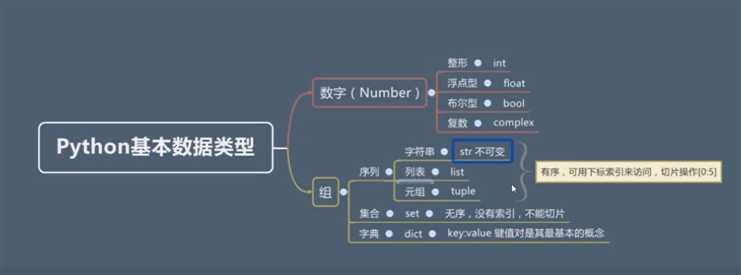标签:lse 形式 原来 基本 div deepcopy 事物 表的基本操作 false
现实世界中总存在一组一组的事物,
type([‘hello‘,‘world‘,1,9,True,False]) = <class ‘list‘> type([[1,2,3,],[1,2],[True,False]]) =<class ‘list‘> 嵌套列表
[‘第一个数‘,‘第二个数‘,‘第三个数‘,‘第四个数‘][-1]=‘第四个数‘ [‘第一个数‘,‘第二个数‘,‘第三个数‘,‘第四个数‘][-2:]=[‘第三个数‘, ‘第四个数‘] [‘第一个数‘,‘第二个数‘,‘第三个数‘,‘第四个数‘]+[‘另外一个数‘,‘另外第二个数‘]=[‘第一个数‘, ‘第二个数‘, ‘第三个数‘, ‘第四个数‘, ‘另外一个数‘, ‘另外第二个数‘] [‘第一个数‘,‘第二个数‘,‘第三个数‘,‘第四个数‘]*3=[‘第一个数‘, ‘第二个数‘, ‘第三个数‘, ‘第四个数‘, ‘第一个数‘, ‘第二个数‘, ‘第三个数‘, ‘第四个数‘, ‘第一个数‘, ‘第二个数‘, ‘第三个数‘, ‘第四个数‘]
import random as ran lis =[y for y in range(10)] # lis[1]=10 # print(lis) # [0, 10, 2, 3, 4, 5, 6, 7, 8, 9] # lis[2:5]=list("hello") # print(lis) # [0, 1, ‘h‘, ‘e‘, ‘l‘, ‘l‘, ‘o‘, 5, 6, 7, 8, 9] # lis.append(‘hello‘) # print(lis) #[0, 1, 2, 3, 4, 5, 6, 7, 8, 9, ‘hello‘] # del lis[:] # print(lis) #[] # lis=lis.count(9) #这个 list 里面有多少个 ‘hello‘ # print(lis) # 1 列表中有一个9 # print(lis) # [0, 1, 2, 3, 4, 5, 6, 7, 8, 9] # print(lis.pop()) # 9 删除最后一个 # print(lis.pop(1)) # 1 # print(lis) # [0, 2, 3, 4, 5, 6, 7, 8] # lis.remove(5) # 移除第一个 # print(lis) # [0, 1, 2, 3, 4, 6, 7, 8, 9] # lis.reverse() # 列表反转 # print(lis) # [9, 8, 7, 6, 5, 4, 3, 2, 1, 0] # lis.clear() # 清除列表 # print(lis) # [] # b =lis.copy() # print(b) # [0, 1, 2, 3, 4, 5, 6, 7, 8, 9] # lis=[x for x in range(10) if x%2 ==0] # lis_extend=[x for x in range(10) if x%2 ==1] # print(lis) # [0, 2, 4, 6, 8] # print(lis_extend) # [1, 3, 5, 7, 9] # # lis.extend(lis_extend) # 追加列表 原来列表变化 + 号处理后不改变原来列表 # print(lis) # [0, 2, 4, 6, 8, 1, 3, 5, 7, 9] # lis.insert(0,‘hello‘) # print(lis) # [‘hello‘, 0, 1, 2, 3, 4, 5, 6, 7, 8, 9] # lis.insert(0,list([1,2,3,])) # print(lis) # [[1, 2, 3], 0, 1, 2, 3, 4, 5, 6, 7, 8, 9] # lis =[round(ran.random()*11,2) for x in range(10)] # print(lis) # [8.39, 8.61, 9.59, 9.23, 7.41, 6.91, 7.93, 7.41, 4.75, 5.9] # lis.sort(reverse=True) #reverse True 是倒序 # print(lis) # [9.59, 9.23, 8.61, 8.39, 7.93, 7.41, 7.41, 6.91, 5.9, 4.75]
(1, 2, 3, 4, 5) (1, -1, True) (1,2,3,4,5)[2]=3 (1,2,3,4,5)[:2]=(1, 2) (1,2,3,4,5)+(6,7)=(1, 2, 3, 4, 5, 6, 7) (1,2,3,4,5)*3=(1, 2, 3, 4, 5, 1, 2, 3, 4, 5, 1, 2, 3, 4, 5)、 type((1,2,3))=<class ‘tuple‘> type((1))=<class ‘int‘> type((1,))=<class ‘tuple‘> type(())=<class ‘tuple‘> type(("hello"))=<class ‘str‘> ()括号 定义运算 所以当括号只有一个元素时候 括号当作是运算符号 而不是元祖的标识
元组的具体操作有哪些?
元组 ,不可变。不能修改,
a=[1,2,3,4] b=‘hello‘ print(tuple(a)) # (1, 2, 3, 4) print(tuple(b)) # (‘h‘, ‘e‘, ‘l‘, ‘l‘, ‘o‘)
有序 int, float, bool, str, list, tuple str, list, tuple 序列 共有操作 每个序列元素都有一个序号 切片 [‘第一个数‘,‘第二个数‘,‘第三个数‘,‘第四个数‘][-2:]=[‘第三个数‘, ‘第四个数‘] 是否包含元素 3 in [1,2,3,4,5,6] =True 3 not in [1,2,3,4,5,6]=False + * 操作 len([1,2,3,4,5,6])=6 len("hello world")=11 max([1,2,3,4,5,6])=6 min([1,2,3,4,5,6])=1 max("hello world")=“w” ord() 接受一个参数 转换成为ascll 码 ord("w")=119 ord(" ")=32
无序,不支持序列操作 type({1,2,3,4,5,6})=<class ‘set‘> 不重复性 {1,1,2,2,3,3,4,4}={1, 2, 3, 4} len({1,2,3,4,5,6})=6 in {1,2,3,4,5,6}=True not in {1,2,3,4,5,6}=False 求两个集合差集 {1,2,3,4,5,6} - {3,4} = {1, 2, 5, 6} 求两个集合的交集 {1,2,3,4,5,6} & {3,4} = {3, 4} 求两个集合的合集 {1,2,3,4,5,6} | {3,4,7} = {1, 2, 3, 4, 5, 6, 7} 如何定义空的集合 set()
dic=[(‘name‘,‘shiguang‘),(‘学号‘,10086)] print(dict(dic)) # {‘name‘: ‘shiguang‘, ‘学号‘: 10086} print(dict(name="拾光",age=18)) # {‘name‘: ‘拾光‘, ‘age‘: 18}
字典的一些操作:
# 字典 # dic={‘name‘: ‘shiguang‘, ‘学号‘: 10086} # 修改 查找 # dic[‘name‘]=‘hello‘ # print(dic[‘name‘]) # hello # del 删除 # del dic # del dic[‘name‘] # print(dic) # {‘学号‘: 10086} #清空 # dic.clear() # print(dic) #{} # print(‘我的名字叫: %(name)r 学号:%(学号)s ‘%dic) # 我的名字叫: ‘shiguang‘ 学号:10086 # 设置默认值 # dic.setdefault(‘abcd‘,True) # print(dic[‘abcd‘]) # True dic={‘name‘: ‘shiguang‘, ‘学号‘: 10086,‘info‘:[‘name‘,19,18]} dic_copy=dic.copy() # 浅复制 # dic[‘age‘]=18 # print(dic) # {‘name‘: ‘shiguang‘, ‘学号‘: 10086, ‘info‘: [‘name‘, 19, 18], ‘age‘: 18} # print(dic_copy) # {‘name‘: ‘shiguang‘, ‘学号‘: 10086, ‘info‘: [‘name‘, 19, 18]} # dic[‘info‘].remove(‘name‘) #两个都会删除 # del dic[‘name‘] #copy的字典不会删除 # print(dic) # {‘学号‘: 10086, ‘info‘: [19, 18]} # print(dic_copy) # {‘name‘: ‘shiguang‘, ‘学号‘: 10086, ‘info‘: [19, 18]} # 深复制 from copy import deepcopy dic_copy=deepcopy(dic) dic[‘info‘].remove(‘name‘) # deepcopy的name不会删除 del dic[‘name‘] # deepcopy的字典不会删除 print(dic) # {‘学号‘: 10086, ‘info‘: [19, 18]} print(dic_copy) # {‘name‘: ‘shiguang‘, ‘学号‘: 10086, ‘info‘: [‘name‘, 19, 18]}
Key 不可变的类型 Value 可以使任何类型 字典定义形式 {key1:value1,key2:value2...} type({1:1,2:2,3:3}) = <class ‘dict‘> {‘Q‘:‘q技能‘,‘W‘:‘w技能‘,‘E‘:‘e技能‘,‘R‘:‘r技能‘} 通过key 来访问/得到 value 字典不能有相同的key {‘Q‘:‘q技能‘,‘W‘:‘w技能‘,‘E‘:‘e技能‘,‘R‘:‘r技能‘}[‘Q‘] = ‘q技能‘ {1:‘q技能‘,‘1‘:‘w技能‘,‘E‘:‘e技能‘,‘R‘:‘r技能‘}[‘1‘] = ‘w技能‘

标签:lse 形式 原来 基本 div deepcopy 事物 表的基本操作 false
原文地址:https://www.cnblogs.com/wlgaojin/p/12069420.html